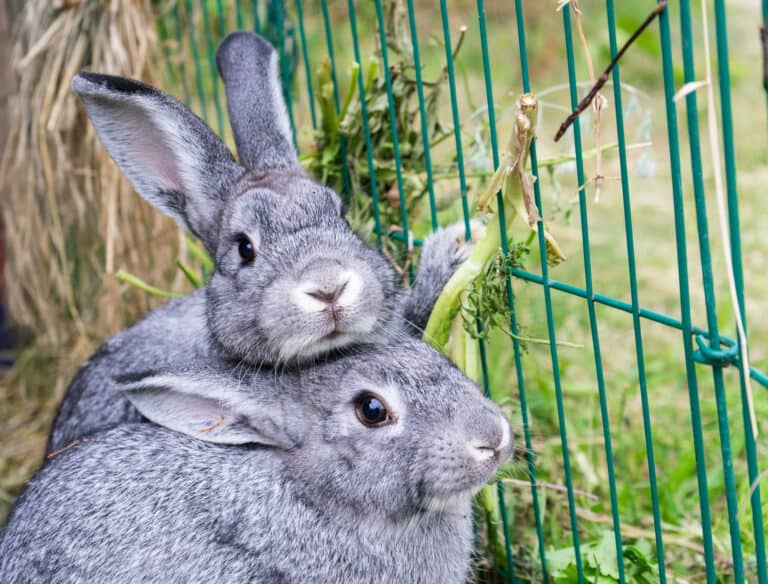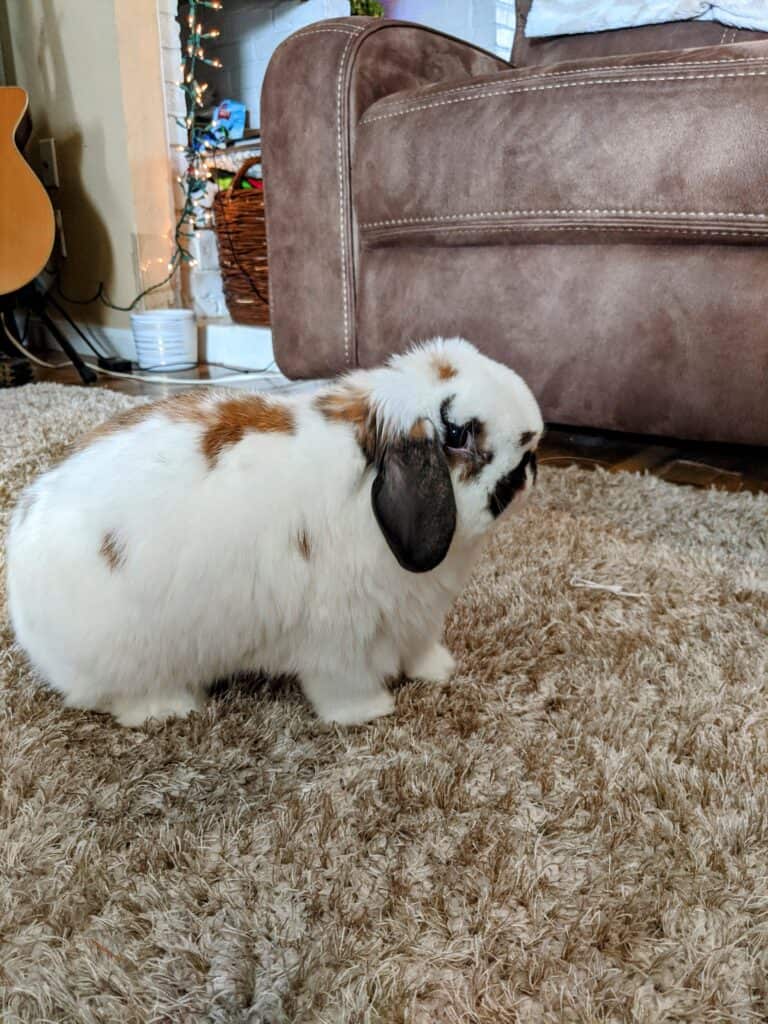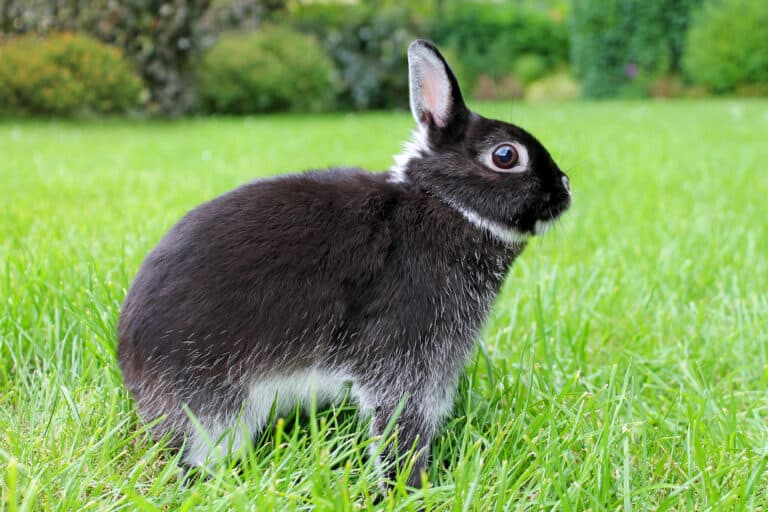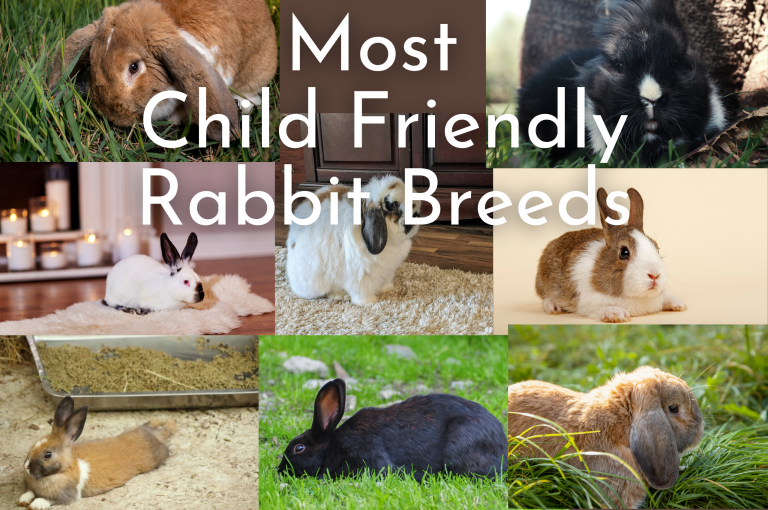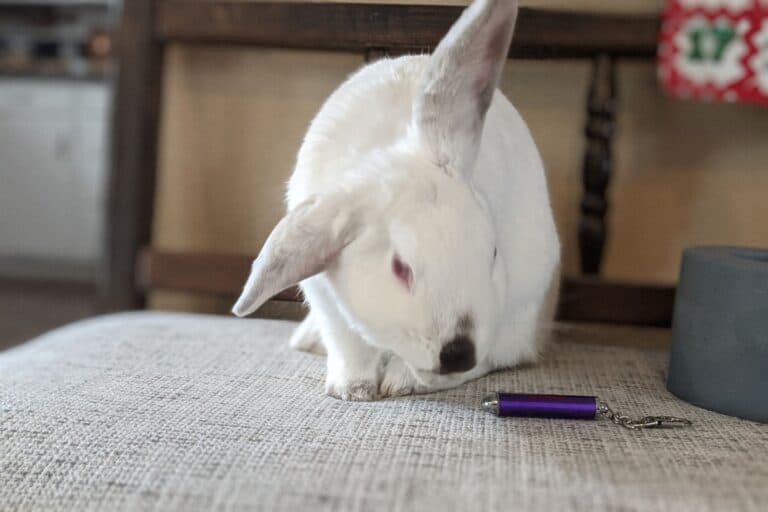All About the Broken New Zealand Rabbit
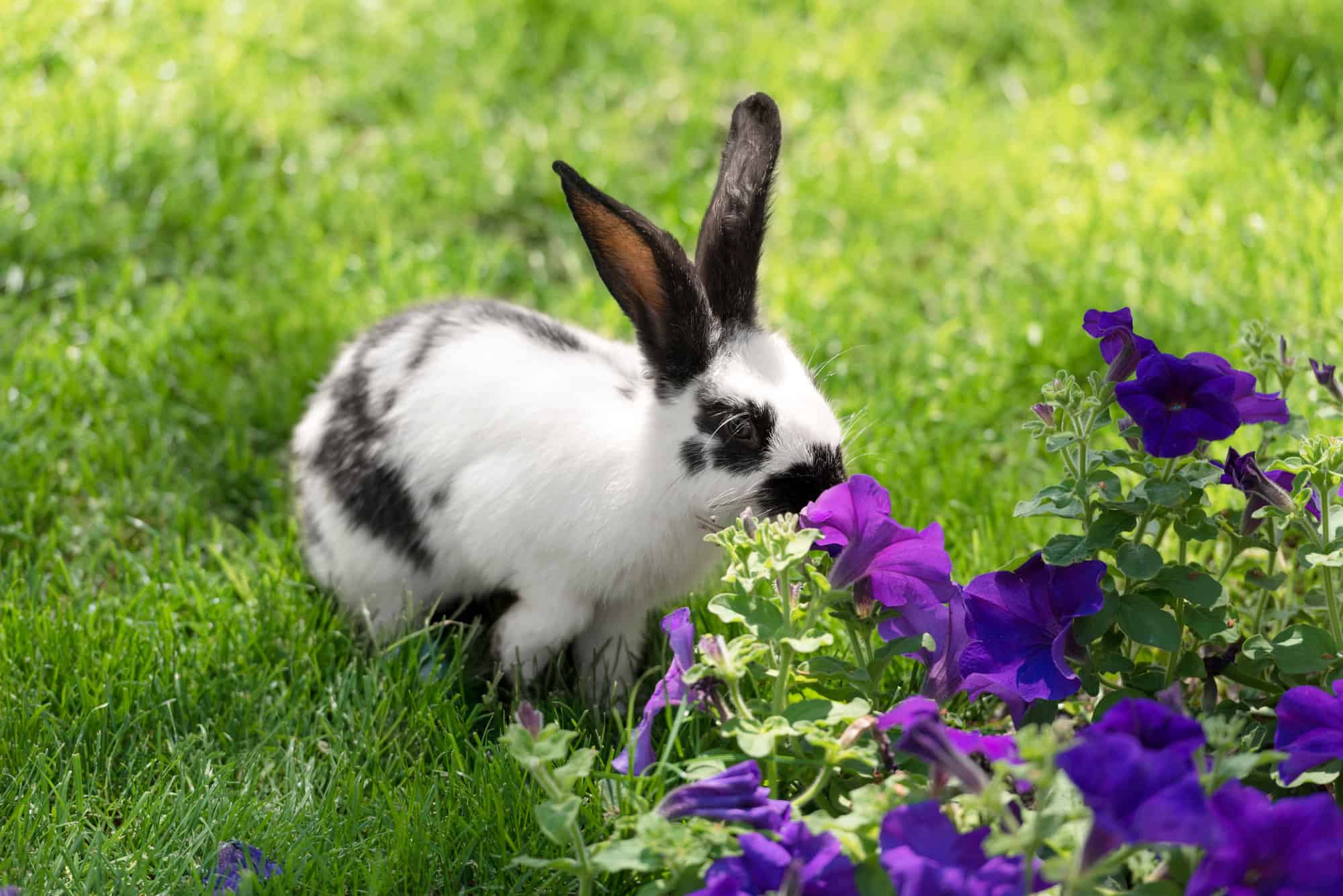
No, they’re not broken, as in they have a defect of some kind. A Broken New Zealand rabbit is as whole and as adorable as other rabbit breeds. The term ‘broken’ has to do with its color and markings.
Although this rabbit type was bred primarily for meat and fur production, bunnies from this breed make great pets, too. They’re extremely friendly, and because of their size (they’re big rabbits, by the way), they’re sturdy enough for families with small kids. That said, we still recommend supervising all interactions between your human and fur babies.
So what’s a Broken New Zealand rabbit, and why should you consider getting one if you’re looking for a pet bunny? Here are some details about this gentle giant.
The History of the New Zealand
Surprisingly, New Zealand rabbits originated in the US, not New Zealand, as their name suggests. In fact, they’re considered a truly American breed, tracing their roots in California. They came from the combined genes of Belgian Hares and Flemish Giants.
So why are they called New Zealand rabbits? It may have something to do with an article about a breed variation (the New Zealand Red) being imported from, well, New Zealand. No supporting documents can verify if the alleged importation really happened or not, but the name caught on.
Other types evolved from the initial New Zealand Red variety. First came the White New Zealand in 1919, followed by the Black New Zealand rabbits in 1924. The Broken New Zealand rabbit is the second latest variety that gained recognition in the US. The American Rabbit Breeders Association (ARBA) accepted it as a breed in 2010. The most recent addition to the New Zealand bun type is the Blue New Zealand, which the ARBA recognized in 2016.
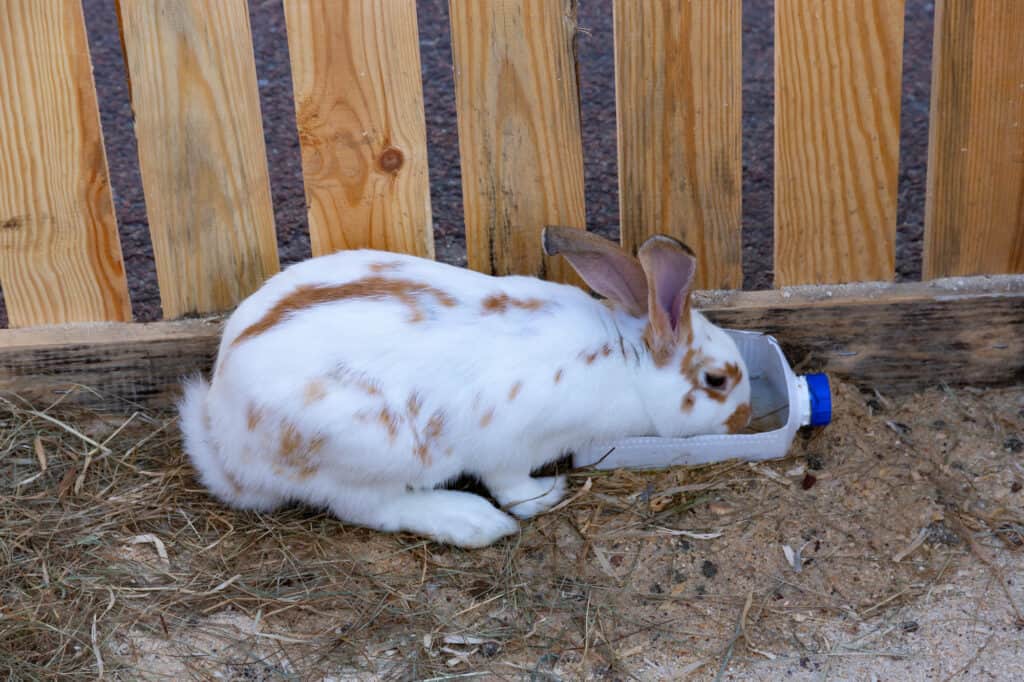
What Makes This Bun Type Broken?
The term ‘broken’ refers to a breed’s color pattern. A rabbit with a broken color pattern is predominantly white with patches of color on its fur. The broken pattern varies depending on how much of the coat is colored and how much is white.
General Appearance
Buns from this breed have well-rounded and muscular bodies. Their initial purpose was for meat production, and their build shows it, being well-filled from hips to ribs. They have a round head with thick, furry, and erect ears.
New Zealand buns meant for show differ slightly from those meant for meat production. Show rabbits have shorter bodies and ears, with thicker fur and a plumper appearance.
Coat
The Broken New Zealand rabbit has soft, flyback fur. This means that when you stroke the bun’s coat in the opposite direction, the hair strands fall back to their original position. The breed’s coat needs little maintenance, requiring minimal grooming to reduce the amount of loose hair, especially during molting season.
Size
Broken New Zealand buns are classified as large breeds. They can weigh anywhere from 4 to 5 kg. (9 to 12 lbs.) in adulthood. Like most rabbit breeds, the male (buck) weighs less than the female (doe). A full-grown buck usually reaches 4 to 5 kg. (4 to 9 lbs.), while a mature doe will often weigh a heftier 4.5 to 5.4 kg. (10 to 12 lbs.).
Temperament
Broken New Zealand rabbits make wonderful pets due to their friendly and docile nature. When socialized at an early age, these buns grow up loving people and enjoy being petted and held. Calm and laid-back rabbits that they are, they don’t usually bite. As such, even families with young children can have one for a pet.
However, you’ll need to respect your bun’s personal space and supervise all interactions between him and your kids. A Broken New Zealand rabbit might still show aggressive behaviors like biting or scratching when threatened or scared.
Lifespan
You’ll be glad to know that you can expect to have your rabbit for quite a while. New Zealand buns typically live between 7 to 10 years, as they don’t have breed-specific health issues.
Care
All rabbit breeds need the same kind of care to live a long, healthy life. You’ll just have to make a few adjustments related to your fur baby’s size.
Feeding Requirements
Because a Broken New Zealand rabbit is a large breed, he’ll require more food than smaller buns. Still, make sure you don’t overfeed him to prevent weight issues. Your rabbit’s diet should consist mainly of hay, with Timothy Hay being the most suitable. His meals should also contain a good balance of veggies, leafy greens, pellets, and a small quantity of fruits, such as oranges, watermelon, and apples.
Take note of rabbit-safe veggies, as some vegetables can cause digestive issues, especially if you offer a significant amount. Regarding fruits, limit your pet’s serving size because most fruits contain plenty of sugar, which can impact his health.

Living Space
Again, due to the Broken New Zealand rabbit’s size, he’ll need a larger space than, say, the minuscule Dwarf Lionhead rabbit, that weighs only 3 to 3 ½ pounds. At the minimum, the cage should be at least 4 times the size of your bun. For smaller rabbits or rabbits weighing less than 8 pounds, 24 inches by 36 inches of cage space may be enough, while larger buns require at least 30 inches by 36 inches of living area.
Of course, if you can provide a larger area to serve as your rabbit’s home, so much the better. Your fur baby will surely appreciate the extra room to play and jump around.
This bun breed can live both indoors and outdoors. Because of its size, some fur parents find it easier to provide outdoor housing. That won’t be a problem, provided the hutch or enclosure is well protected from predators and the elements.
Exercise Needs
Rabbits in the wild often run 3 miles a day. That will give you an idea of how much exercise your bun requires. Providing physical and mental activities helps ensure your rabbit won’t suffer from boredom, which can lead to destructive behaviors such as chewing wires, carpets, or anything he can reach through his cage.
Allow your bun about 3 hours of free-range time. If you want to let him roam outdoors, keep him protected with a large enclosure he can’t escape from, and predators can’t access.
Grooming
Fortunately, Broken New Zealand rabbits have minimal grooming requirements. They do shed, but a once-a-week brushing is enough to reduce the amount of fur your pet might ingest when he grooms himself. Don’t bathe your bun unless necessary, such as when he gets filthy. You may have heard of rabbits who love swimming, but they generally hate getting wet, and having a bath is a traumatic experience for them.
Trim your pet’s nails when needed. If you’re uncomfortable doing the task, consider taking your rabbit to a professional groomer.
Health Issues
Broken New Zealand rabbits can suffer from ailments common to all bun breeds. These include the following:
- Rabbit hemorrhagic disease: an infection caused by 2 virus strains.
- GI Stasis: the slowing down or complete stoppage of the passage of food in the gut.
- Malocclusion: overgrown or misaligned teeth.
- Ear Mites: insects that live inside the ear canals of rabbits.
- Hairballs or wool block: fur that buns ingest that turns into balls inside the stomach can cause blockages in the intestines.
- Flystrike: a horrible condition caused by flies that lay their eggs on rabbits.
- Eye infections: eye problems caused by bacteria or viruses.
If you want to have a gentle giant for a pet, a Broken New Zealand rabbit will make an excellent choice. This bun can get along well with almost everyone, from small kids to other animal companions in your home. As such, it’s a welcome addition to any pet-loving home.
More Rabbit Breeds!
- How Big Do Holland Lop Rabbits Get? Complete Guide
- How Long Do Flemish Rabbits Live: Giant Breed Facts
- Are Rabbits Rodents? Find Out More About These Small Mammals
- How Long Do Holland Lop Rabbits Live?
- All About Bunnies with Red Eyes: Why and How They Get Red Eyes
We hope you enjoyed this post! If you did, will you give it a share or two 🙂 Thank you! ~from Every Bunny Welcome


